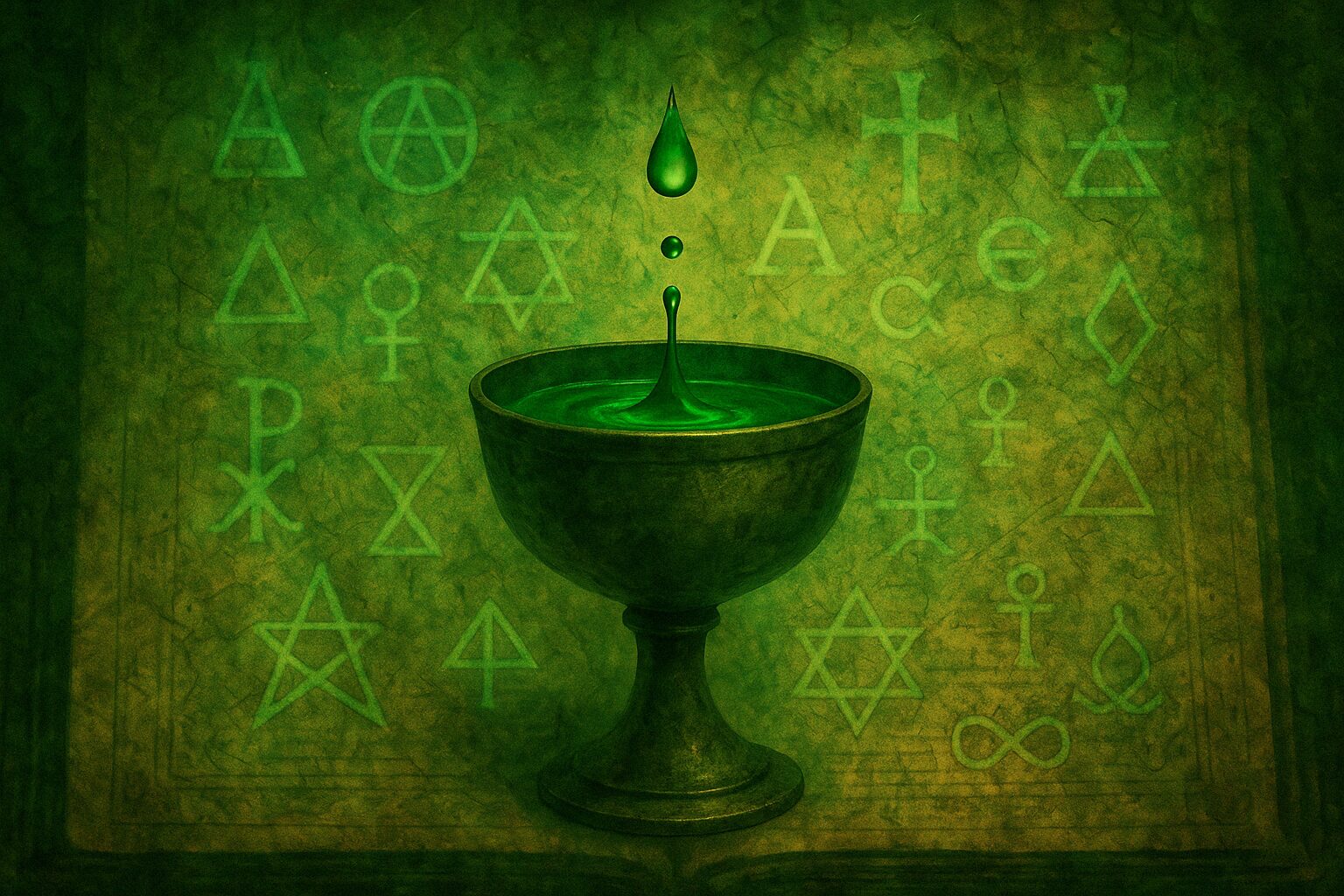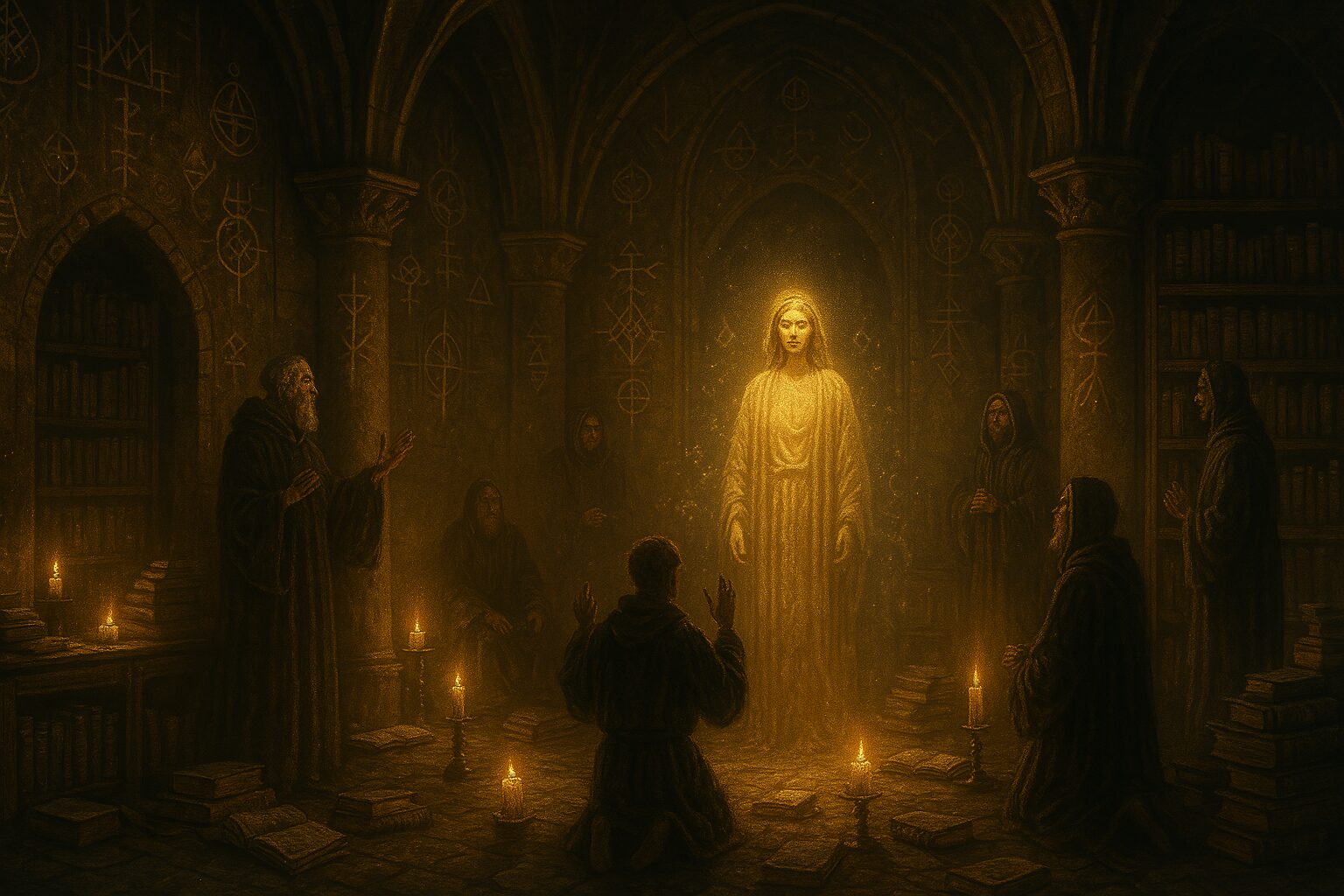“The Grail is not a cup but a process—an alchemical vessel where spirit and matter meet, dissolve, and transmute.”
Introduction: A New Quest for the Green Grail
From medieval romances to modern mysticism, the Holy Grail has captivated seekers for centuries. Traditionally imagined as the chalice of Christ or a symbol of divine mystery, the Grail is being reinterpreted today—not as a relic of blood, but as a vessel of green renewal.
In France, the land of Chrétien de Troyes and Cathar martyrdom, this eco-alchemical Grail mythos is being revived by spiritual ecologists, artists, and esoteric Christians. They see in the Grail not just a sacred object, but a symbolic technology of inner and planetary healing.
This is the story of Le Sang Vert—“the green blood”—a vision of alchemical Christianity where the Grail is filled not with blood alone, but with chlorophyll, resurrection, and sacred ecology.
The Medieval Roots: From Chrétien to the Cathars
The Grail legend was born in French soil. Chrétien de Troyes, writing in the 12th century, introduced the “Graal” as a mysterious, luminous object of divine origin. Later versions emphasized its connection to the blood of Christ, while the Cathars, dwelling in the Languedoc, held to a more Gnostic vision—where the world was a prison of matter and the true Grail was an inner liberation.
The Cathars’ refusal of the material church, their vegetarianism, and reverence for Sophia-like wisdom all make them spiritual ancestors to today’s eco-mystics, who reinterpret their rejection of worldly power as a proto-ecological ethic.
Alchemy and the Vessel of Transformation
The Grail has long been associated with alchemy. The vessel in which transformation occurs—the alembic, the retort, the cup—is central to both spiritual and chemical transmutation. In French alchemical texts, the Grail often functions as the container of opposites, where sulfur and mercury, spirit and flesh, masculine and feminine, dissolve into the One Thing.
Today’s eco-Grail seekers draw on this imagery, but replace lead into gold with waste into soil, carbon into green life, despair into devotion.
The Return of the Green Grail
Across France, a wave of symbolic eco-Christian projects reimagines the Grail through the lens of sacred ecology:
- Montségur Reclaimed: A Cathar-inspired retreat center built into the foothills of the Pyrenees holds seasonal “Green Grail” rituals—featuring biodynamic vine communion, labyrinth walks, and meditations on the four elements.
- The Sang Vert Collective (Lyon): An artistic-spiritual group creating interactive installations where visitors pour water from symbolic “Grails” into living soil to trigger sound-reactive moss growth. The vessels are shaped like open hearts, emphasizing vulnerability and receptivity.
- The Graal Enchanté Archive: A digital archive curating texts, visuals, and soundscapes reinterpreting the Grail legend in ecological, feminist, and techno-mystical terms. The site includes Kabbalistic interpretations, Cathar hymnals, and AI-assisted glosses on Chrétien’s verse.
Chlorophyll as Christic Substance
In traditional mysticism, blood is life, the carrier of soul and sacrament. In eco-Grail mysticism, a new analogy emerges: chlorophyll—the green blood of plants—becomes the Christic fluid, transforming sunlight into nourishment, death into rebirth.
Some eco-mystics engage in ritual anointing with plant oils, “green masses” in forests, and meditations on photosynthesis as eucharist. The phrase “Le sang vert” has become a mantra among those who see the divine not only in crucified flesh, but in the leaf, the vine, and the blooming field.
Esoteric Christianity Reawakened
French esoteric Christianity—drawing from Louis-Claude de Saint-Martin, the Rosicrucians, and symbolist poets like Mallarmé—has always treated the Grail as more than an object. It is the womb of the soul, the heart of Sophia, the temple of reconciliation.
In this context, the eco-Grail becomes a symbolic fusion of Mary and Earth, of spirit and compost. The Virgo Paritura of alchemical diagrams becomes not just the Mother of God but Gaïa herself—waiting to birth a renewed consciousness through sacred ecological attention.
Digital Grails and Ritual Code
The fusion of ecology, mysticism, and tech continues. Several projects are now mapping the Grail archetype into ritual code and interactive spiritual tech:
- Project GrailOS: A ritual-operating system that uses ecological data (sun cycles, humidity, soil health) to generate daily meditations and prayer prompts, inspired by Grail symbology and Christian liturgical hours.
- ChaliceNet: A decentralized platform where users share dreams, insights, and rituals connected to the Grail archetype. Entries are timestamped with planetary alignments and botanical references.
The vision here is not nostalgia—it’s re-enchantment through symbolic tech. Just as the knights of old followed signs and visions, today’s seekers follow signals—emotional, ecological, digital—all pointing toward the sacred.
Critique and the Shadow of Romanticism
Critics argue that this movement risks romanticizing both Christianity and nature. Some ecologists resist mystical framing, while theologians may view it as syncretic or heretical. There’s also tension between symbolic ritual and concrete action—can alchemical metaphors really save the planet?
Eco-Grail seekers respond that symbols are not escapes, but engines of change. They don’t deny the urgency of climate justice—they infuse it with soul. In their view, only a transformed consciousness can meet the crisis. The Earth must not only be protected—but loved as divine.
Conclusion: The Grail Is Growing
The Grail myth is not dead—it is germinating. In French forests, cryptic basements, community gardens, and digital monasteries, it lives again—not as a relic, but as a process.
The Green Grail is a reminder:
That the divine is not found in gold, but in green.
That blood and sap are both sacred.
That the chalice of transformation is always near—if we dare to lift it.
And so the quest continues, not through dragon-slaying, but through composting, contemplation, and communion with the Earth.


